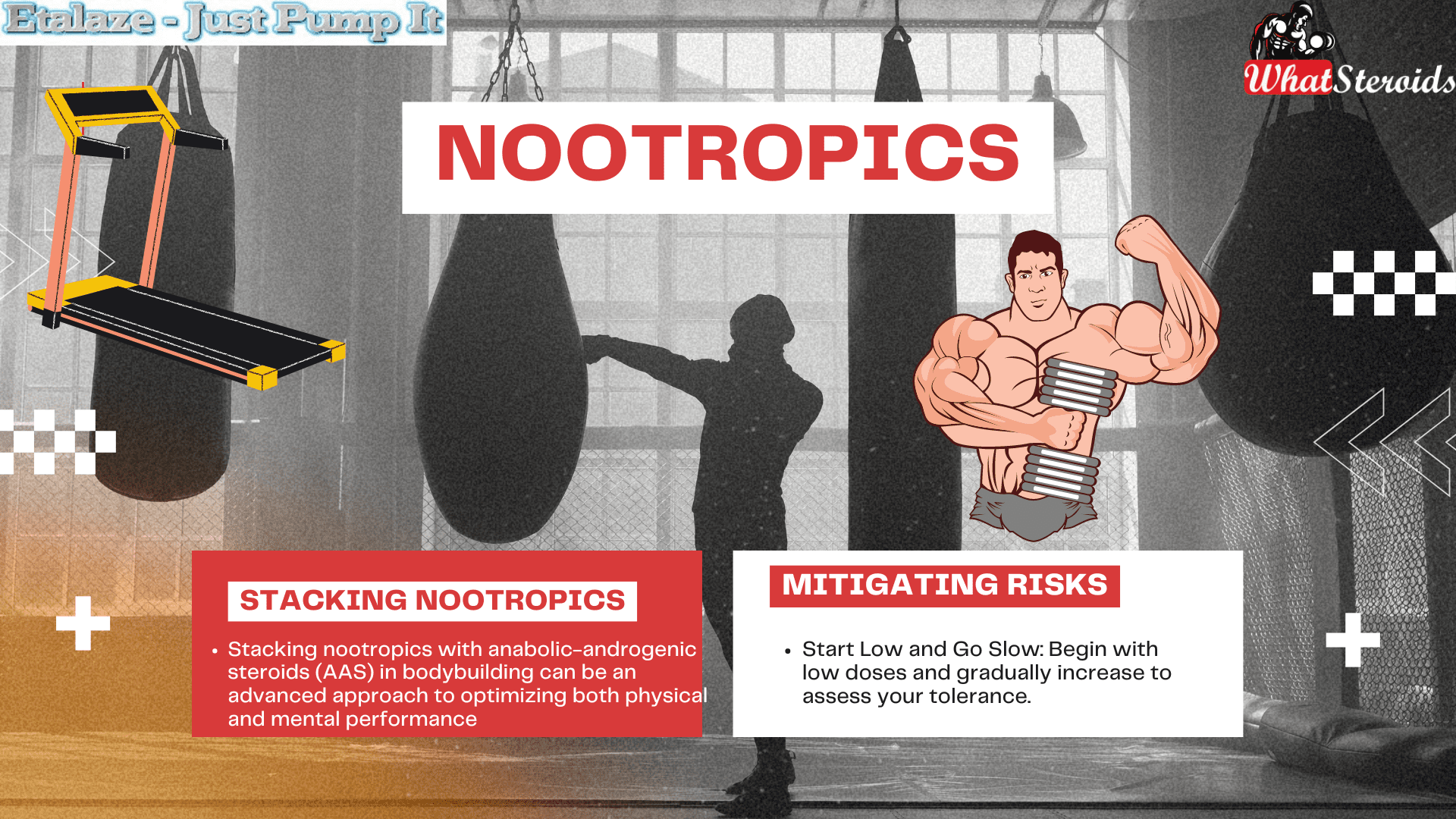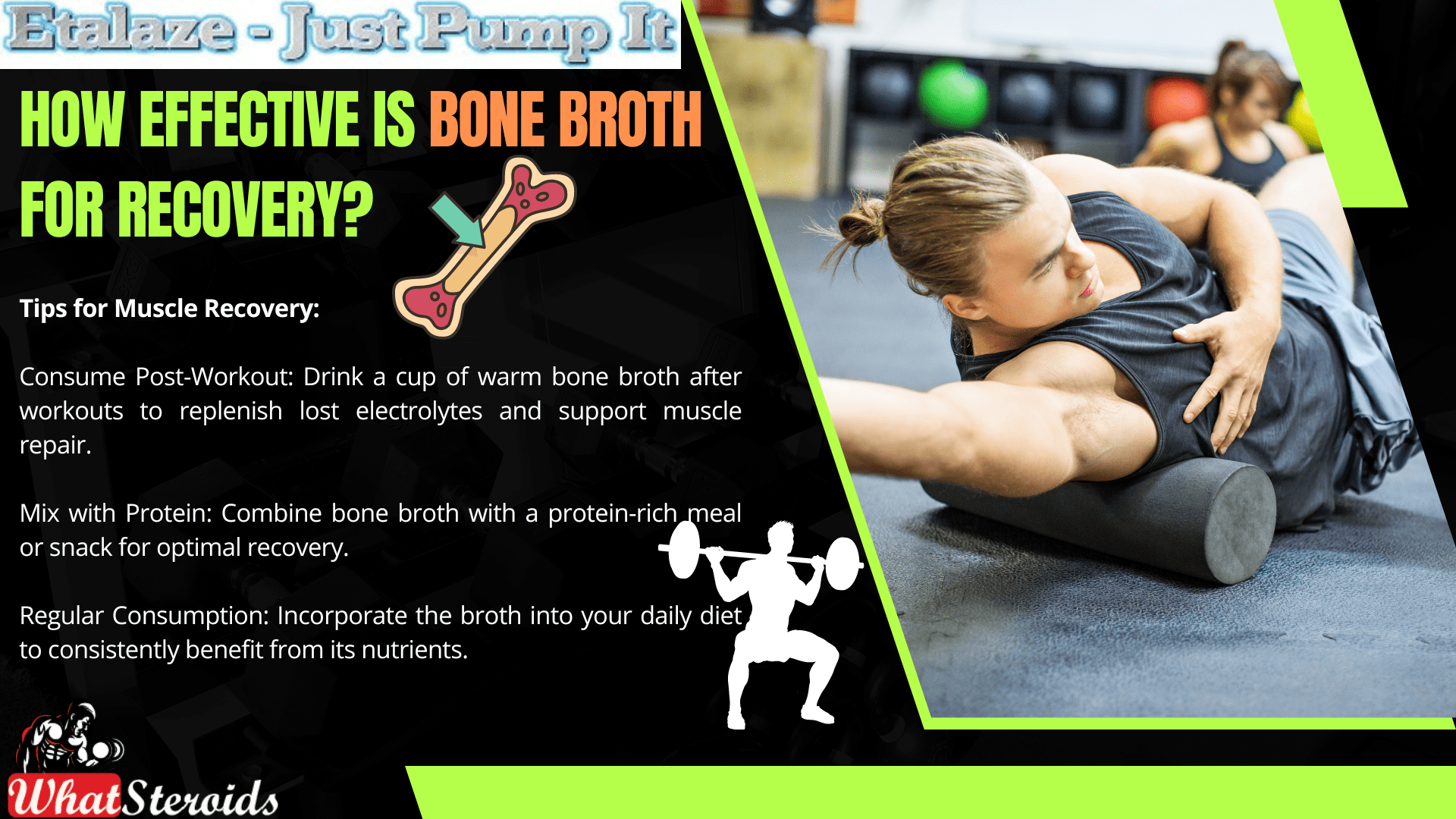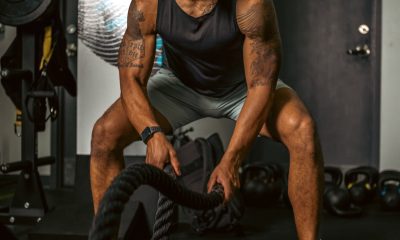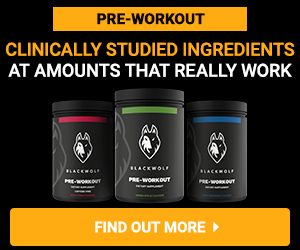Nutrition
5 Creative High Protein Meal – Prep Dishes to Save You Time
For people who are always busy a good example being athletes, meal prepping comes in as a very important concept. The concept basically involves preparing your meals or dishes way before consuming them. It is a very imperative not only in saving time but also in its effect on the health of the individual. Preparing Meal a head of your schedule as it seems is of course a bit complicated. We therefore decide to explore this concept here in great details highlighting some of the top 5 most creative high protein meal prep dishes that can help you save time if you are a busy individual.
Why is meal prepping beneficial?
 Preparing your meals in advance some great benefits touching on some aspects such as your nutrition, your lifestyle and so much more. Here are some of the most important benefits that you can be sure to rip if you consider meal prepping:
Preparing your meals in advance some great benefits touching on some aspects such as your nutrition, your lifestyle and so much more. Here are some of the most important benefits that you can be sure to rip if you consider meal prepping:
- Helps you stick to your preferred diet - When you have your meals ready, you can never be tempted to eat something that is may not be important for your health nutrition-wise.
- Controlling your diet is easier - Meal prepping does not only help in making sure that you stick to your diet but also comes in strongly in helping ensure that the diet you are consuming has the right contents in the right amounts.
- You can easily put your hunger under control - Since you already prepared your meal, there is no point why you should feel hungry since you can easily eat your meal.
- Saving time - Of course, we cannot fail to mention that meal prepping saves quite some time especially if you have little time to prepare your meals.
- Saving your costs - Have your meal already prepared saves some costs such as costs of delivery of meals, you don’t waste a lot of food and other resources.
When you start meal prepping, you tend to know exactly how much of the ingredients you will need for each of the meals that you will be preparing. This in the long run helps reduce wastage.
Related Article:: Bodybuilding Diet Myths for Beginners
Some disadvantages of meal prepping
 Meal prepping lacks many disadvantages. Some of the few that can be found include:
Meal prepping lacks many disadvantages. Some of the few that can be found include:
- It can get boring for some people - Some people prefer to eat a wide variety of food. Meal prepping on the other hand in most cases will involve eating only a single variety of food. This will not favor people who like going for variety.
Prep Containers >> HERE
- May not be good for kids - Meal prepping may not work for kids because they may not like the plan.
The disadvantages of meal prepping can easily be avoided through using spices of different varieties or any other way of flavoring your food. This way, you end up avoiding the monotony.
The different ways of prepping High Protein Meal
Meal prepping can be done in several ways most of which take care of how much time you want to spend during the process. You can always spare your weekend if you choose the best way of meal prepping. Here are the different ways that you can prep High Protein Meal:
Cooking meals in advance
This way of meal prepping simply involves cooking full meals such that the next thing when they are removed from the fridge will be eating them. The only thing that might intercept will be reheating them so that they are warm and good for consuming. The most appropriate meals that this way of High Protein Meal prepping is suitable are those meals that are particularly great for dinner.
Batch cooking
 Another way of meal prepping is batch cooking. Batch cooking involves preparing sizeable quantities of a certain recipe, which can then be divided into single portions. These portions are each frozen and are consumed for a given period of time usually of several months. Meals that are good for lunch and even dinner will be best prepped using this way of meal prepping.
Another way of meal prepping is batch cooking. Batch cooking involves preparing sizeable quantities of a certain recipe, which can then be divided into single portions. These portions are each frozen and are consumed for a given period of time usually of several months. Meals that are good for lunch and even dinner will be best prepped using this way of meal prepping.
KETO Meal Prep >> HERE
Portioned individual meals
In this way, one basically prepares meals then divides them into portions that are separate. These portions are refrigerated and can be easily grabbed and consumed afterwards. If you like quick lunches, then this way will be particularly good for you to use as you prep your meals.
Earlier ingredient preparation
Sometimes if you do not want to prepare meals in advance but still want to save some time, then you can consider preparing your ingredients earlier. This means that you are going to use minimum time as much as possible while in the kitchen.
There may be other ways that you can do your meal prepping. It totally depends on your day-to-day routine. However, the above-mentioned ways are the most common and one or two are likely to favor your routine and ensure that you are not late whether you are an athlete or any other person who is busy.
Must Read:: Best Diet Plan for Bodybuilders 2019
What to Consider Before Starting Meal Prepping
Before you start meal prepping and even before choosing your recipe, there are 3 things you need to put into consideration:
The meal you want to prepare at an appropriate time
There are meals you may want to prepare for breakfast, lunch or dinner. It is very important that you know which food will be the best at such times for you.
- The day of doing your meal preps - So that you do not interfere with your work or your workouts, find a suitable time that you can do your meal preps. People often go for Sundays and Wednesdays but it is upon you to choose the appropriate day.
- The amount you want to prepare - Deciding on the amount to prepare is also very important. This makes sure that you do not waste a lot of time and at the same time ensure that the food lasts the time intended.
The Type and Number of Meals to Prepare During High Protein Meal Prepping

Something that is very crucial when it comes to meal prepping is getting to know the type of meal as well as the number of meals to prepare. This is because Meal Prepping is all about planning a head and one cannot plan ahead without knowing what and in which amounts to prepare. To ensure that you get the right type and amount to prepare, you can follow this guide here:
- Find out the type of meal that you want depending on your preferences.
- The next thing that you will consider is the meal prepping method that will fit your day-to-day activities and lifestyle.
- After having landed the best method for you, have a quick check on your calendar and find out the number of breakfast, lunches and dinners that you will require for the specified period of time according to your method and again your lifestyle.
- Take into consideration the times you are likely to not use your meal preps for example you may have dates and so on.
- Start with recipes that are familiar to you and then slowly transit to more complex recipes.
Spending less time while High Protein Meal prepping
 While it help save time in the long run, meal prepping can keep you in the kitchen if you are not well prepared. Highlighted here are some of the tips that can help ensure that you are spending less time as much as possible in the kitchen when doing your meal preps.
While it help save time in the long run, meal prepping can keep you in the kitchen if you are not well prepared. Highlighted here are some of the tips that can help ensure that you are spending less time as much as possible in the kitchen when doing your meal preps.
Have one schedule that you use
Having a single schedule for your meal preps is a good first step in ensuring that you spend the least time possible in the kitchen. Have a clear outline of when you will fetch your groceries and when you will be preparing the meals. This of course also depends on your lifestyle and how busy you are.
Know the recipes that you need for your meal preps
Having a well-known combination of recipes for a given meal preps is something else that goes a long way I ensuring that you spend as less time as much as possible. It is generally recommended that your recipes should at least require different cooking methods so that you do not end up requiring the same utensil for several kinds of meals.
A good organization in prep and cooking time is required
Different foods have different cooking times. Knowing this will help you organize how well you can ensure that you they fit into your lifestyle. Generally, start with foods that require long cooking times. As they cook, you can focus on the ones that require shorter times.
Have a shopping list
Lastly, if you are considering saving time while making your preps, always ensure that you have your shopping list. This is one area that when not properly taken into consideration will lead to a lot time being wasted. Things like getting to double check everything will waste a lot of time. Therefore, a shopping list is a great tool for you to save time while making your meal preps in the kitchen.
General types of foods suitable for meal prepping
Before looking into the 5 high protein meal prep dishes, here are some of the general types of foods that are good when it comes to meal prepping. Some of them will be a crucial part of the dishes you will want to prepare.

- Frozen vegetables - are among some of the best foods you can incorporate into your meal preps. They include broccoli, cauliflower, green beans and peas.
- Starchy vegetables - suitable for meal prepping include cassava, potato, taro and canned pumpkin.
- Stiff fresh vegetables - in this category include cabbage, carrots and radish.
- Lean protein - are also part and parcel of meal prepping. Foods in this category include eggs, shredded cheese, tofu, beef and pork.
- Whole fruits - to ensure that you balance your diet, fruits should also be part of the meal preps. Notable fruits include apples, oranges, pears and bananas.
The 5 creative high protein meal prep dishes
After having looked into various concepts of meal preps, one thing that has emerged is the need to save time. Busy athletes and other people will try to identify those dishes, which will help them save time and at the same time contain high protein, which is required considering the nature of their activities. Here are some of those dishes, which will make sure that you are spending less time in the kitchen and contain high proteins.
1 Slow Cooker Barbecue Chicken
 Barbecue chicken for a long time has been the best meal to be taken during dinner. Something good about it is that it can be made more easily and quickly compared to most other foods.
Barbecue chicken for a long time has been the best meal to be taken during dinner. Something good about it is that it can be made more easily and quickly compared to most other foods.
Crock Pot 8 >> HERE
Here is how you can prepare your barbecue chicken as a meal prep:
- You will first make a tex-mex salad with lettuce, tomato, onion, black beans, Monterey jack cheese and crushed tortilla chips about a handful.
- This is followed by topping over a thin-crust whole-wheat pizza dough and then sprinkling with mozzarella.
- After that, you will top over medium baked sweet potato.
- Then make a quesadilla with high protein tortillas, Monterey jack cheese, beans and diced tomatoes.
- Finally, roll into a high protein tortilla full of lettuce, tomato, onion and Colby-jack cheese.
2. Beef Stir - Fry With Asian Peanut Sauce
 This another great dish that falls in our category of creative high protein meal preps, you can quickly prepare this dish through following the simple steps below.
This another great dish that falls in our category of creative high protein meal preps, you can quickly prepare this dish through following the simple steps below.
- Chop the beef and add it to brown rice and beans or a chili if available.
Beef Stir >> HERE
- You can then cube, reheat and then add to a soup that is broth-based and which has sliced vegetables, a good example being carrots.
- The next thing that you do is making a Panini sandwich using thin slices of pork and some cheese.
- Next, you serve over wild rice with sautéed cauliflower or even kale on the side.
- Finally, slice and then add whole grain pasta with vegetables.
3. Rosemary - Mustered Pork Tenderloin
 Next on our list of the top 5 creative high protein meal prep dishes is the rosemary- mustered pork tenderloin. Here is how you can prepare your dish.
Next on our list of the top 5 creative high protein meal prep dishes is the rosemary- mustered pork tenderloin. Here is how you can prepare your dish.
- Chop the pork tenderloin and add it to brown rice and beans or even a chili.
- Proceed to add to a broth-based soup with sliced vegetables after having cubed and reheated.
- Follow this by making a Panini sandwich with thin slices of pork and cheese.
- Serve over wild rice with sautéed cauliflower or kales if available on the side.
- You can then slice and add to whole grain pasta with vegetables.
4. Baked Salmon With Citrus Herbs
 This dish is for those who like fish. A delicious dish can be prepared as described here below.
This dish is for those who like fish. A delicious dish can be prepared as described here below.
- Baked salmon can be enjoyed over some green salad made with lettuce, tomatoes, cucumber, feta cheese and sunflower seeds.
- It can be served with quinoa or sometimes faro and some side vegetable be it cauliflower or broccoli.
- The leftover salmon can diced and used in a frittata or an omelet.
- You can then chop and make into salmon cakes.
- This can be used in fish tacos with black beans, shredded cheese dice avocado.
5. Teriyaki Tofu
 Although it can generally be said that tofu lacks the flavor, it is a far way good dish that can quickly be prepared and also contains high proteins. Besides, you can easily infuse ginger, garlic, onions or any other flavors to suit your flavors.
Although it can generally be said that tofu lacks the flavor, it is a far way good dish that can quickly be prepared and also contains high proteins. Besides, you can easily infuse ginger, garlic, onions or any other flavors to suit your flavors.
- Teriyaki tofu can be served over brown rice or even sorghum.
- Toss it into leftover chili.
- You can then create a Buddha bowl with sautéed greens and lentils.
- Finally serve with baked sweet potato fries and broccoli.
Storage of the Meal Preps
After having prepared your meals, the next thing that you will consider is storage so that they remain fresh for the period that you specified. The most important thing that is highlighted here is the medium of storage. Getting the right storage contain will go a long way into ensuring that you get the best result ever. Storage containers can be:
Airtight Containers
Airtight containers can be used to keep ingredients, which are ready to cook. They should be washable and include silicone baggies and stainless steel containers, which are reusable.

BPA-Free Microwavable Containers
BPA-microwavable containers have the advantage in the sense they are very convenient and are not harmful to your health. Example of these containers include Pyrex glassware and collapsible silicone containers.

Freezer-Safe Containers
 Freezer safe containers come in strongly in helping maintain the quality of your food. This because they have this effect of limiting freezer burn as well as nutrient losses. The container of choice in this category include the wide-mouthed mason jars with a space of about 1 inch left to allow space for the expansion of food when it freezes.
Freezer safe containers come in strongly in helping maintain the quality of your food. This because they have this effect of limiting freezer burn as well as nutrient losses. The container of choice in this category include the wide-mouthed mason jars with a space of about 1 inch left to allow space for the expansion of food when it freezes.
Compartmentalized Containers That Are Leak-Proof
Finally, some very good containers that you may consider using for storage of your meal prep dishes are the compartmentalized leak-proof containers. Particularly if it comes to those meal prep dishes intended for lunch or those dishes that usually require their ingredients to be mixed at the end.
Food Safety When Carrying Out Prepping
Meal prepping can result to some health problems if enough care is not taken into consideration. One such health problem is food poisoning, which affects millions each year. So what guidelines can be used to ensure that food poisoning as well as other health effects related to meal prepping are not experienced?
Proper Temperatures
You refrigerator or freezer should always be at proper temperatures. The recommended refrigerator temperatures are about 5 degrees Celsius or below while for the freezer should be -18 degrees Celsius or below
Refrigerating Fresh Foods
Fresh foods should always be refrigerated as early as within 2 hours of purchase and after cooking. To ensure that they cool quickly, you can simply spread those foods, which have been cooked into containers, which are a bit shallow. This is followed immediately by transferring them into your refrigerator.
Storage Period
Storage times for certain foods is important. For instance, such foods like fresh meat or even fish should be cooked within about 2 days after purchasing them. Others like red meat can stay a bit longer but not more than 5 days after purchasing them. Within the storage times, it is recommended that they foods be kept in the bottom shelf of the refrigerator.
Cooking Temperatures
Cooking temperatures should be the right for the right type of food. This is because bacteria in different foods are killed at different temperatures. For example, meats heated to temperatures of at least 75 degrees Celsius will ensure that most of the bacteria are killed.
Thawing food
Thawing food should also be done safely and the best way to this is by using your refrigerator instead of instead of the countertop like some people do. So that this process is done faster, you can submerge the food in cold water and change the water after every 30 minutes.
Reheating the food
Reheating the food is another thing that will ensure that your food is well and safe. This should be done at the right temperature as well as just once. The recommended temperature of reheating the food is usually about 75 degrees Celsius. It is generally considered that the more times you heat your food the more you increase the chances of food poisoning. It is therefore in the best interest that you heat your food only once.
Labeling
Labeling your food and including the date on which they should be consumed also helps ensure that your dishes stay safe as much as possible.
Eat food at the right time
Lastly, eat the food within the stipulated time. This will ensure that the food does not go and give you food poisoning.
Conclusion
Meal prepping can be a great way to help you save cooking time if you are a busy athlete. This article has highlighted some important concepts regarding meal prepping as well as giving you some of the top 5 creative high protein meal preps that can be very helpful.
Bodybuilding
Are Nootropics a Better Option to AAS?

Nootropics in bodybuilding refer to supplements or substances that enhance cognitive functions such as focus, memory, motivation, and mental clarity. While traditional bodybuilding supplements focus on muscle growth, strength, and endurance, nootropics target the mental aspect of training. Improved focus and motivation can lead to better workouts, more consistent training, and ultimately better results.
Must Read: A New Caffeine? What You Need to Know about Teacrine
Here are some common nootropics used in bodybuilding:
Caffeine: Widely used for its stimulant effects, caffeine can boost energy, focus, and endurance during workouts.
L-Theanine: Often combined with caffeine, L-Theanine promotes relaxation without drowsiness, helping to balance out the jittery effects of caffeine.
Alpha-GPC: A source of choline that supports the production of acetylcholine, a neurotransmitter essential for cognitive function and muscle contraction.
Rhodiola Rosea: An adaptogen that helps reduce fatigue and improve mental resilience, making it useful for both physical and mental performance.
Bacopa Monnieri: Known for enhancing memory and reducing anxiety, Bacopa is popular for those who want to stay mentally sharp during intense training phases.
Lion’s Mane Mushroom: A natural nootropic that supports brain health, cognitive function, and reduces mental fatigue.
Phenylpiracetam: A racetam-class nootropic that is known for its stimulating effects and ability to enhance focus and mental energy, which can be beneficial during challenging workout sessions.
Stacking Nootropics With AAS
Stacking nootropics with anabolic-androgenic steroids (AAS) in bodybuilding can be an advanced approach to optimizing both physical and mental performance. Here’s a guide on how to combine these substances effectively:
Understanding the Purpose of the Stack
Combining nootropics with AAS aims to enhance not only muscle growth, strength, and recovery (which AAS focus on) but also mental aspects like focus, motivation, and mood (which nootropics address). This stack can help bodybuilders push through plateaus, manage training stress, and maintain peak performance.
Common Nootropics to Stack with AAS
Caffeine + L-Theanine: Enhances alertness and focus while reducing anxiety. Helps with energy and focus during intense workouts.
Alpha-GPC: Boosts acetylcholine levels, improving mental clarity and enhancing the mind-muscle connection.
Rhodiola Rosea: Mitigates stress and fatigue, which is crucial during heavy steroid cycles where physical and mental stress is higher.
Lion’s Mane Mushroom: Promotes cognitive health and neuroprotection, helping you stay sharp during longer cycles.
Bacopa Monnieri: Reduces anxiety and improves memory, supporting better recovery and relaxation outside the gym.
Tips for Stacking
Start with Lower Doses: If you’re new to either nootropics or AAS, start with minimal doses and gradually adjust based on how your body responds. Stacking too much too soon increases the risk of side effects.
Cycle Both Nootropics and AAS: Just like AAS, it’s wise to cycle nootropics to avoid tolerance buildup. For instance, you might use nootropics for 6-8 weeks and then take a break, aligning this cycle with your AAS cycle.
Prioritize Liver and Organ Health: Both nootropics and AAS can stress the liver and other organs. Incorporate liver support supplements like milk thistle, NAC (N-Acetyl Cysteine), and TUDCA (Tauroursodeoxycholic Acid).
Stay Hydrated and Maintain Proper Nutrition: Both nootropics and AAS can increase metabolic demands. Staying hydrated and following a nutrient-rich diet ensures better overall performance and health.
Related Article: Protein Powder Supplement Comparison – Which Type To Choose?
Sample Stack for a Cutting Phase
Nootropics: Caffeine + L-Theanine, Alpha-GPC, Rhodiola Rosea
AAS: Testosterone Propionate, Trenbolone Acetate, Anavar (Oxandrolone)
Support Supplements: Liver support (NAC, TUDCA), multivitamins, omega-3s
This stack can help maintain muscle mass, enhance focus and energy during workouts, and support mental well-being during calorie deficits.
Sample Stack for a Bulking Phase
Nootropics: Lion’s Mane, Bacopa Monnieri, Alpha-GPC
AAS: Testosterone Enanthate, Deca-Durabolin (Nandrolone Decanoate), Dianabol (Methandrostenolone)
Support Supplements: Joint support (collagen, glucosamine), digestive enzymes, liver support
This combination can boost cognitive function, improve recovery, and support the intense training needed for mass-building phases.
Stacking nootropics with AAS can offer significant benefits for bodybuilders aiming for peak mental and physical performance. However, it’s critical to approach this strategy with caution, considering the possible interactions and side effects. Always consult a healthcare professional before starting any stack, especially one involving AAS and nootropics.
Possible Side Effects Associated With Nootropics
While nootropics can enhance cognitive function, focus, and motivation, they can also cause side effects, especially when used in high doses or stacked with other supplements like anabolic-androgenic steroids (AAS). Some common side effects associated with nootropics in bodybuilding include:
1. Insomnia and Sleep Disturbances
Many nootropics, especially stimulants like caffeine, can lead to difficulties falling asleep or maintaining restful sleep. This is particularly problematic if taken late in the day, as sleep is critical for recovery and muscle growth.
2. Anxiety and Nervousness
Nootropics that stimulate the central nervous system (e.g., caffeine, phenylpiracetam) can increase anxiety, jitteriness, or nervousness, especially when combined with other stimulants or during periods of high stress.
3. Headaches
Certain nootropics, particularly racetams (like piracetam or aniracetam), can deplete choline levels in the brain, leading to headaches. Supplementing with choline sources like Alpha-GPC can help mitigate this side effect.
4. Gastrointestinal Issues
Some nootropics may cause nausea, stomach cramps, or diarrhea, especially if taken on an empty stomach or in high doses.
5. Mood Swings and Irritability
Nootropics that affect neurotransmitter levels (like dopamine or serotonin) can lead to mood swings, irritability, or even depressive symptoms if used improperly or if taken in combination with AAS, which can already impact mood.
6. Tolerance and Dependence
Frequent use of certain nootropics, particularly stimulants, can lead to tolerance, where increasing doses are needed to achieve the same effect. This can also result in dependence, where users feel they need the nootropic to function optimally.
7. Overstimulation
High doses or the wrong combination of nootropics can cause overstimulation, leading to symptoms like rapid heart rate, high blood pressure, and excessive sweating. This can be particularly risky during intense workouts.
8. Cognitive Fatigue or Brain Fog
In some cases, nootropics intended to boost focus or clarity can backfire, leading to cognitive fatigue or brain fog. This can happen due to overloading neurotransmitter pathways or poor dosing strategies.
9. Interactions with Other Supplements or Medications
Nootropics may interact with other bodybuilding supplements, medications, or AAS, leading to unexpected side effects. For example, combining stimulants like caffeine with pre-workouts or fat burners can amplify side effects like anxiety or heart palpitations.
10. Long-Term Safety Concerns
The long-term effects of many nootropics are not well-studied, especially when taken in high doses or combined with other substances. Chronic use could potentially lead to neurological imbalances or organ stress over time.
Mitigating Risks
Start Low and Go Slow: Begin with low doses and gradually increase to assess your tolerance.
Cycle Usage: Avoid using the same nootropics daily to prevent tolerance and dependence.
Stay Hydrated and Eat Well: Proper hydration and nutrition can reduce the risk of gastrointestinal and cognitive issues.
Monitor Your Response: Keep track of how you feel when taking nootropics and adjust accordingly if you notice negative side effects.
Consult a Professional: If you’re stacking nootropics with other substances like AAS, it’s essential to get medical advice to avoid harmful interactions.
While nootropics can offer cognitive and motivational benefits in bodybuilding, responsible use and monitoring are key to minimizing side effects.
Take Away
To conclude, nootropics can help bodybuilders maintain high levels of mental energy, motivation, and focus during training, which is essential for pushing through tough workouts and staying consistent with your fitness goals. However, as with any supplement, it’s important to research and consider potential side effects and interactions.
Don't Miss: Horse Chestnut and Other Supplements to Get Rid of Water Retention
Bodybuilding
How Effective is Bone Broth for Recovery?

Bone broth has gained popularity in the fitness community, including among bodybuilders, due to its potential benefits for recovery. It is a nutrient-dense liquid made by simmering animal bones and connective tissues for an extended period. This process extracts a variety of beneficial compounds and nutrients. Here's how it is effective for post-workout recovery:
1. Bone Broth is Rich in Collagen and Gelatin:
Bone broth is high in collagen, a protein that supports joint, tendon, and ligament health. Gelatin, derived from collagen, may help reduce joint pain and inflammation, which is beneficial after intense workouts.
2. Amino Acid Profile:
Bone broth contains important amino acids like glycine, proline, and glutamine. These amino acids support muscle repair and growth, immune function, and gut health—all crucial for recovery.
3. Electrolytes and Hydration:
It provides electrolytes like potassium, magnesium, and calcium, which help with hydration and muscle function. Proper hydration is key to recovery and preventing cramps or muscle fatigue.
4. Mineral Content:
Bone broth is rich in essential minerals like calcium, phosphorus, and magnesium. These minerals contribute to bone health and muscle contraction, supporting recovery.
5. Anti-Inflammatory Properties:
The nutrients in the broth may help reduce inflammation, speeding up recovery and reducing soreness after workouts.
6. Supports Gut Health:
Bone broth can help heal and maintain the gut lining, which is important for nutrient absorption and overall recovery.
Must Read: Best supplements for College students
How to Prepare Bone Broth at Home
Preparing bone broth at home is straightforward and can be customized to fit your dietary needs for muscle recovery. Here’s a step-by-step guide:
Ingredients:
- Bones: Use a mix of beef, chicken, pork, or fish bones. Marrow bones, knuckles, and joints are especially rich in collagen.
- Vegetables (optional): Carrots, celery, onions, and garlic add flavor and nutrients.
- Vinegar: 1-2 tablespoons of apple cider vinegar help draw out minerals from the bones.
- Herbs and Spices (optional): Bay leaves, thyme, rosemary, and peppercorns for added flavor.
- Water: Enough to cover the bones and vegetables.
Instructions to Prepare Bone Broth
- Prepare the Bones:
- Roasting (optional but recommended): Roast the bones in the oven at 400°F (200°C) for 30-40 minutes. This enhances the flavor of the broth.
- Place Bones in a Pot:
- Transfer the bones to a large stockpot, slow cooker, or pressure cooker.
- Add Vegetables and Vinegar:
- Add your chosen vegetables and the apple cider vinegar to the pot. Vinegar is crucial as it helps extract the minerals from the bones.
- Cover with Water:
- Add enough water to cover the bones by about 2 inches. Avoid adding too much water, as it can dilute the broth.
- Cooking Time:
- Stovetop: Bring the water to a boil, then reduce the heat to a simmer. Cook for 12-24 hours. The longer you simmer, the more nutrients you extract.
- Slow Cooker: Set on low and cook for 12-24 hours.
- Pressure Cooker: Cook on high pressure for 3-4 hours.
- Skim the Foam:
- During the first hour of cooking, you might notice some foam rising to the top. Skim it off with a spoon to keep the broth clear.
- Add Herbs and Spices (optional):
- In the last hour of cooking, add any herbs or spices for flavor.
- Strain the Broth:
- Once the broth is done, strain it through a fine-mesh sieve or cheesecloth into another pot or large container to remove the bones and vegetables.
- Cool and Store:
- Let the broth cool. You can refrigerate it for up to 5 days or freeze it in portions for longer storage.
- Use the Broth:
- You can drink the broth as-is, use it as a base for soups or stews, or incorporate it into your post-workout meals.
Tips for Muscle Recovery:
Consume Post-Workout: Drink a cup of warm bone broth after workouts to replenish lost electrolytes and support muscle repair.
Mix with Protein: Combine bone broth with a protein-rich meal or snack for optimal recovery.
Regular Consumption: Incorporate the broth into your daily diet to consistently benefit from its nutrients.
Making the broth at home allows you to control the ingredients and flavor, ensuring a nutrient-rich recovery drink tailored to your needs.
Don't Miss: Chia Seeds in A Bodybuilder’s Diet: An Expert’s Advice
Incorporating Bone Broth In Your Diet
Incorporating bone broth into your bodybuilding diet can be both delicious and beneficial. Here are some creative ways to include it:
- Post-Workout Drink: Simply heat up a cup of bone broth and drink it after your workout. It’s a great way to replenish electrolytes and protein.
- Smoothies: Add a scoop of bone broth protein powder to your post-workout smoothie. It blends well with fruits and other ingredients.
- Soups and Stews: Use bone broth as a base for soups and stews. It’s an excellent way to add flavor and nutrients to your meals.
- Cooking Grains: Cook your rice, quinoa, or other grains in the broth instead of water. This enhances the flavor and nutritional content.
- Sauces and Gravies: Incorporate bone broth into sauces and gravies for added depth of flavor and health benefits.
- Marinades: Use bone broth as a base for marinades for meats and vegetables. It adds a rich flavor and helps tenderize the meat.
- Bone Broth Ice Cubes: Freeze bone broth in ice cube trays and add the cubes to your dishes as needed. This is a convenient way to add a nutritional boost to any meal.
- Bone Broth Tea: Mix bone broth with herbs and spices to create a savory tea. This can be a soothing and nutritious drink.
These methods can help you enjoy the benefits of bone broth while keeping your diet varied and interesting. Have you tried any of these methods before?
 Click Here to Buy Binocrit EPO 10 000IU (6 pre-filled pens) by Sandoz
Click Here to Buy Binocrit EPO 10 000IU (6 pre-filled pens) by Sandoz
Which Animal's Bones Give the Best Broth?
Different animal bones can be used to make broth, each offering unique benefits for bodybuilding recovery. Here are some of the best options:
Beef Bones: Beef bones, especially marrow bones, knuckles, and joints, are rich in collagen and gelatin, which support joint health and muscle recovery. They also provide a deep, rich flavor and are packed with minerals like calcium and magnesium.
Chicken Bones: Chicken bones, particularly those from the feet and wings, are high in collagen and gelatin. Chicken broth is lighter in flavor but still rich in nutrients that aid in muscle repair and joint health.
Fish Bones: Fish bones, especially from oily fish like salmon, are excellent for a lighter broth that is rich in omega-3 fatty acids. These fatty acids have anti-inflammatory properties, which can help reduce muscle soreness and promote recovery.
Pork Bones: Pork bones, including the feet and hocks, are also good sources of collagen and gelatin. They produce a flavorful broth that can support joint and muscle health.
Lamb Bones: Lamb bones are another great option, providing a rich, flavorful broth that is high in collagen and minerals.
Each type of bone broth has its own unique flavor and nutritional profile, so you might want to try different ones to see which you prefer and which best supports your recovery needs.
Related Article: Essential Techniques to Master Squats Form
Overall
Can I use bone broth while on steroids? Yes, bone broth can be beneficial for bodybuilders who are using steroids or other supplements, as it provides essential nutrients that support overall health and recovery. Steroids and other performance-enhancing drugs often place additional stress on the body, particularly on the liver, kidneys, joints, and connective tissues. As mentioned, bone broth is rich in collagen, gelatin, amino acids like glycine and proline, and minerals such as calcium and magnesium, which help support joint health, reduce inflammation, and promote gut health. These benefits are especially important for bodybuilders using steroids, as these drugs can sometimes exacerbate joint pain, weaken connective tissues, or cause digestive issues.
Additionally, bone broth can help with hydration and provide electrolytes, supporting muscle function and recovery. While it shouldn't replace other key nutrients and should be used alongside a well-rounded diet and supplement regimen, bone broth can serve as a natural, nutrient-dense addition that helps mitigate some of the side effects of steroid use and enhances overall recovery and performance.
Bodybuilding
Calorie Dumping: A Bodybuilder’s Guide

"Calorie dumping" in bodybuilding refers to a strategy where an individual consumes a large number of calories in a single meal, often following a period of low-calorie intake.
This practice is believed to support muscle growth by providing a surplus of energy and nutrients.
The idea is that after a period of restricted calorie intake, the body becomes more efficient at utilizing nutrients, making it more receptive to absorbing and utilizing the surplus calories in a short period.
However, this approach may not suit everyone and should be approached cautiously as it can lead to discomfort and potential digestive issues.
Calorie dumping, also known as refeeding or cycling calories, is sometimes preferred by bodybuilders to help prevent metabolic adaptation and aid in breaking through plateaus.
By occasionally consuming higher calorie levels, they aim to boost metabolism, replenish glycogen stores, and maintain hormone balance for better muscle growth and fat loss in the long term.
Bodybuilders focus on controlled nutrition plans to optimize muscle growth and minimize fat gain. However, occasionally, you might increase the calorie intake temporarily before an intense workout or competition to boost energy levels, but this isn't considered calorie dumping in the traditional sense.
ALSO READ: Your Guide to Become A Successful Personal Trainer
Long-term and Short-term Benefits of Calorie Dumping
Short-term benefits include replenishing glycogen stores, boosting metabolism, and providing mental relief from a strict diet.
Also known as a "refeed" or "cheat day," bodybuilders do calorie dumping for several long-term reasons:
Best Foods for Calorie Dumping
-

 Steroids2 years ago
Steroids2 years agoShavers and Other Body Grooming Equipment for Bodybuilders In 2023
-

 Steroids2 years ago
Steroids2 years agoChatGPT and Other Avenues to Find Great Bodybuilding Coaches
-

 Steroids2 years ago
Steroids2 years agoBest Oil Recommendations Before Competition for Subtle Shimmer
-

 Steroids2 years ago
Steroids2 years agoPowerlifting Vs Power Building: Find Out the Big Difference and When to Shift Between the Two
-

 Nutrition1 year ago
Nutrition1 year agoEverything Nutritional Food: What’s Too Much Or Too Little
-

 Bodybuilding Products1 year ago
Bodybuilding Products1 year agoTelmisartan In Bodybuilding: An Expert’s Advice
-

 Anabolic Steroids1 year ago
Anabolic Steroids1 year agoLegality of Anabolic Steroids In Latin America
-

 Beginners2 years ago
Beginners2 years agoTren Cycle for Beginners
-

 Bodybuilding1 year ago
Bodybuilding1 year agoChia Seeds in A Bodybuilder’s Diet: An Expert’s Advice
-

 Bodybuilding8 months ago
Bodybuilding8 months agoPrimal Movements: Our Ultimate Guide for Maximum Results
-

 Anabolic Steroids9 months ago
Anabolic Steroids9 months agoJoint Stiffness: How to Manage It While on AAS
-

 Steroids12 months ago
Steroids12 months agoAnadrol Cycle: Benefits, Doses, Alternatives, etc.
-

 Bodybuilding1 year ago
Bodybuilding1 year agoList of FDA-Approved Peptides
-

 Bodybuilding2 years ago
Bodybuilding2 years agoCompetition Prep Cycle for Pro Bodybuilders
-

 Bodybuilding9 months ago
Bodybuilding9 months agoHow Effective is Bone Broth for Recovery?
-

 Steroids10 months ago
Steroids10 months agoOmnitope (Oxytocin)
-

 Bodybuilding1 year ago
Bodybuilding1 year agoHow Much Is Too Much Cardio? Understanding Heart Rate Zones
-

 Steroids9 months ago
Steroids9 months agoSleeping Positions for Effective Muscle Recovery
-

 Bodybuilding1 year ago
Bodybuilding1 year agoCalorie Dumping: A Bodybuilder’s Guide
-

 Anabolic Steroids11 months ago
Anabolic Steroids11 months agoHow Much Do You Know About B-AET? A Fat Burner You’ve Been Missing
-

 Bodybuilding8 months ago
Bodybuilding8 months ago2nd Edition of Natural Bodybuilding Competition Facts
-

 Bodybuilding1 year ago
Bodybuilding1 year agoDemystifying Hypertrophy Training
-

 Bodybuilding8 months ago
Bodybuilding8 months agoAre Nootropics a Better Option to AAS?
-

 Product Reviews11 months ago
Product Reviews11 months agoTop Vitamins for Skin Health
-

 Steroids11 months ago
Steroids11 months agoMajor Bodybuilding Peptides Explained

























